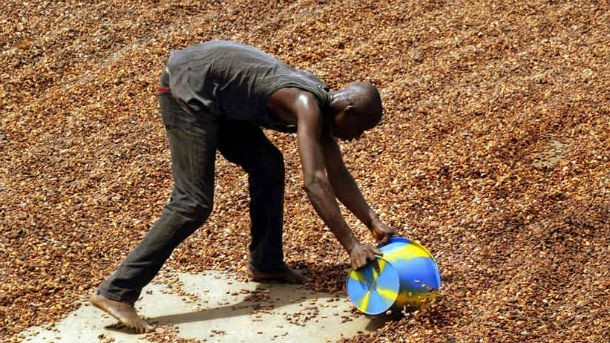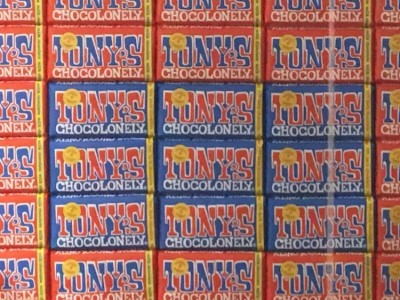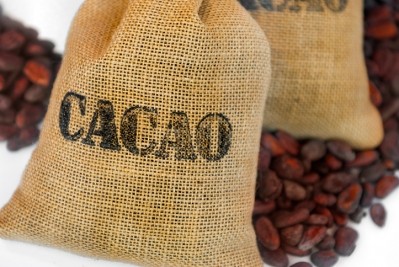Child labor
Zero incidents by 2025? How the cocoa industry intends to eradicate child labor from the supply chain

Millions of children around the world are denied childhood and forced to work, tweeted Antonio Tajani, president of the European Parliament, on Tuesday 12 June - World Day Against Child Labor.
Despite numerous ethical certification schemes, a recent study published by researchers at the University of Sheffield in the UK, into the cocoa and tea trade found forced labor is still widespread in supply chains.
Professor Genevieve LeBaron, professor of politics and co-director of the Sheffield Political Economy Research Institute (SPERI) at the University, led the project.
She said: “Tea and cocoa products are staple household items made and sold by some of the world’s largest brands. But at the base of the global supply chains that put these products on our shelves are highly exploited tea and cocoa workers who are routinely subjected to abuse and living far below the poverty line.
Wake-up call
“The prevalence of forced labor in tea and cocoa supply chains should be a wake-up call for government, industry and auditors.”
The study included tea plantations certified by Fairtrade, Rainforest Alliance, Ethical Trade Partnership and Trustea, and cocoa producers who are members of the Fairtrade and UTZ certified co-operative, Kuapa Kokoo.
After leaders this week at The Consumer Goods Forum in Singapore also called upon businesses to acknowledge the scale of the challenge, and to accelerate action to eliminate forced labor from global supply chains, the cocoa trade, in particular, finds itself under the spotlight once more, especially over the issue of child labor.
The recently published Cocoa Barometer 2018 estimates that 2.2 million children work in cocoa fields in West Africa. Olam, the world’s leading exporter of cocoa from Africa, said there is one issue at the heart of the problem: extreme poverty.
While sustainability and farmer poverty were big on the agenda at the Chocovision 2018 conference in Davos, the industry agrees that there is still a huge amount of work to be done by agribusinesses, customers, NGOs, and international governments.
“The decision to send your child to work on a cocoa farm often comes from a place of necessity in the face of little or no income,” said Simon Brayn-Smith, head of sustainability at Olam Cocoa, in a blog, Child Labor in Cocoa, published on World Day Against Child Labor.
Harnessing data
He said Olam is focusing its efforts to eradicate child labour in its supply chain on three key areas: pulling smallholders out of poverty; developing Child Labor Monitoring and Remediation Systems (CLMRS); and harnessing data at farm level from smartphones to identify where vital social infrastructure like schools are lacking alongside details of farmer families.
In another report published this week, the International Cocoa Initiative (ICI) identified 14,986 child labor cases on cocoa farms in Côte d’Ivoire and Ghana since 2012, but warned the reality could be a lot worse – because of cocoa farmers’ fear of being reported.
“CLMRS depends on farmers being honest, in a way of self-declaring,” said Nick Weatherill, executive director at the ICI. He said six companies - including Mondelēz, Nestlé, Cargill, Barry Callebaut, Olam Cocoa and Tony’s Chocoloney - are currently using CLMRS to prevent child labor.
Greater transparency in the industry was also a call that echoed around the mountains of Davos during Chocovision 2018, so it is interesting that Cargill also chose this week to release its report: Cargill: Breaking The Cycle of Child Labor in Cocoa Production.
Taco Terheijden, director of cocoa sustainability at Cargill Cocoa & Chocolate and the author of the report said: “We share the international community’s commitment to ending child labor in all its forms by 2025, as part of the UN Sustainable Development Goals’ ambitions to promote inclusive and sustainable economic growth, employment and decent work for all. That is why we have set the same timeline for achieving zero incidents of child labor in our supply chain as part of our own Cargill Cocoa Promise goals. But to achieve this, it is vital to understand and address the underlying causes of child labor.”
Fear of lawsuits
In the past, big multinational companies have been reluctant to publish information purporting to unethical practises in their operations for fear of lawsuits. The new report by Cargill releases full data in the spirit of complete transparency and will have been noted in the industry.
“Our initial efforts identified 1,517 incidents of hazardous tasks being conducted by children, which equates to a similar rate found by ICI across all of its supply-chain CLMRS work. The data also provides important insights: the vast majority of cases involved carrying heavy loads, such as water and wood, often for household usage. This speaks to the critical role of community development activities to help ensure communities have access to clean and close water sources and tools such as wheelbarrows so that farm work is easier for adults to perform and children’s work isn’t needed,” writes Terheijden.
His report claims that Cargill and the ICI have already begun implementing relevant remediation activities.
“In some cases, this can be as simple as providing children with birth certificates so they can enrol in school, or distributing school kits so students have the equipment needed to study. In other cases, we are working to create better access to schools, apprenticeships programs, or community services groups where young adults can help with heavy or dangerous farm work instead.”
He said Cargill’s work in this area is ongoing but the company is committed to achieving “zero incidents by 2025”.
US startup Uncommon Cacao has already taken a lead on the multinationals and is disrupting the global cocoa market by being the first radically transparent cocoa supply chain.
“It’s time for radical transparency in the chocolate supply chain. Sharing information about prices, per-farmer production, participation of women, and other origin realities builds value for producers and creates a deeper understanding for all who rely on this supply chain for their businesses and livelihoods.
“Uncommon Cacao is committed to driving systems change in the cacao industry through our unique model focused on long-term partnerships and high quality, delicious cacao beans,” said Emily Stone, Uncommon Cacao founder and CEO.
With calls for legislation from the EU obliging companies to spot and eliminate products guilty of exploiting child labor in the supply chain, it is clear that large-scale reforms are still required from governments, global corporations, certification organisations and industry auditors to eradicate forced labor, and, enforce labor standards in the cocoa industry.








